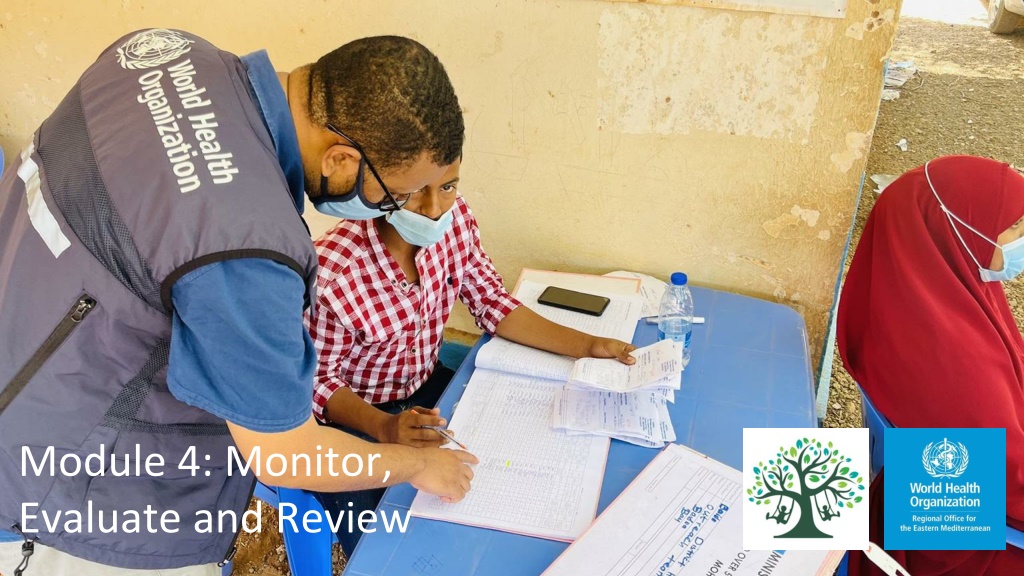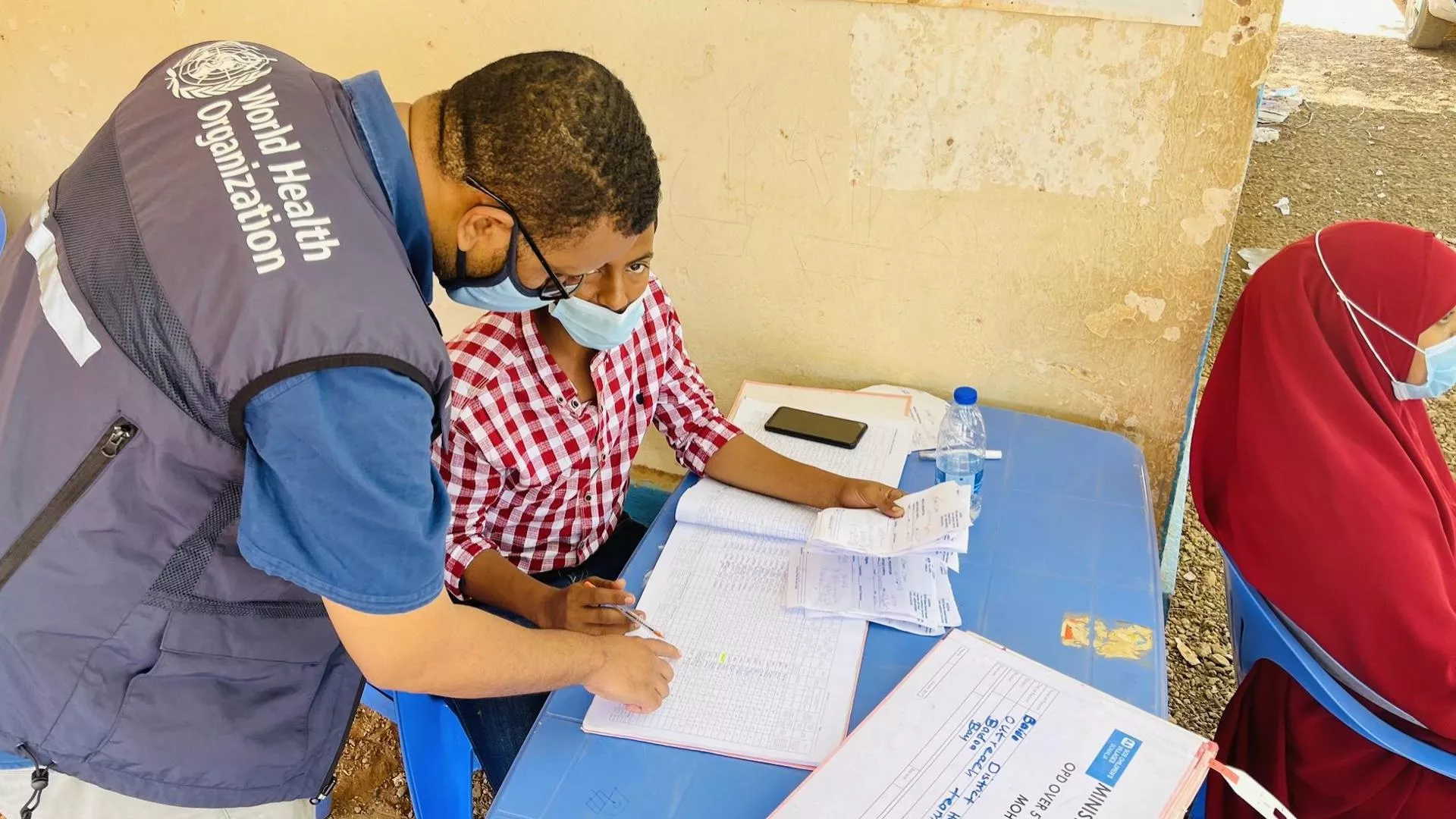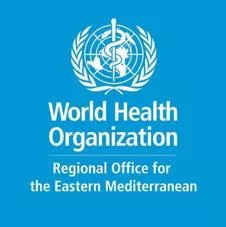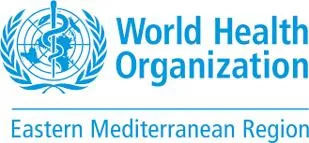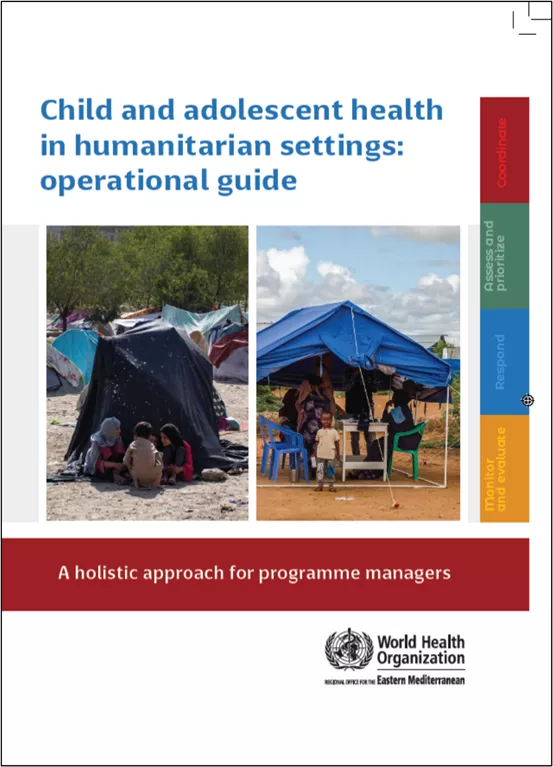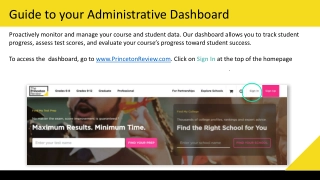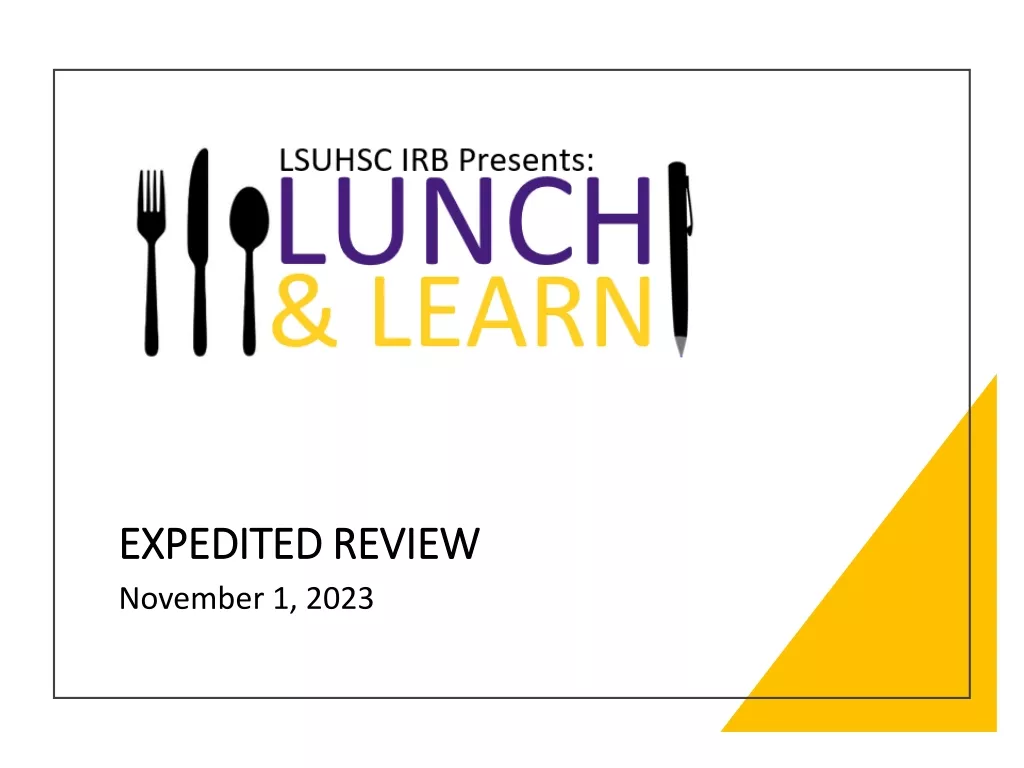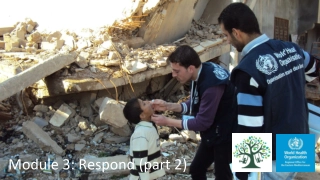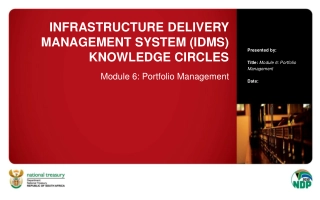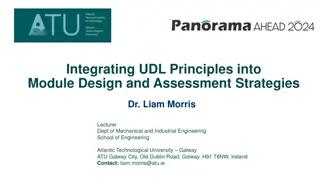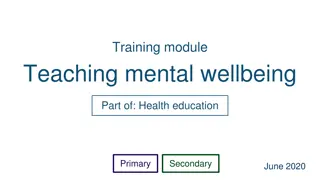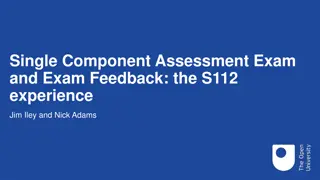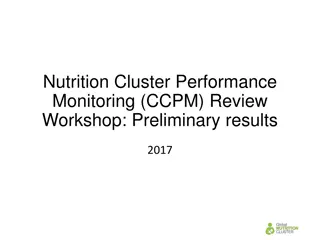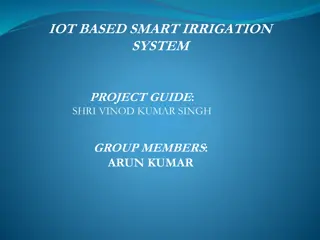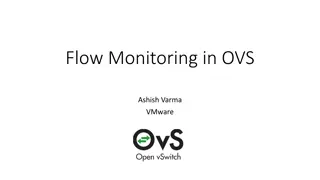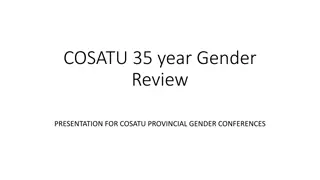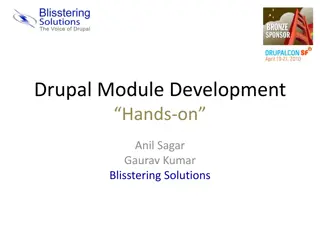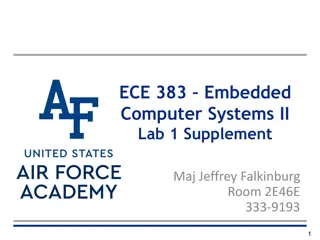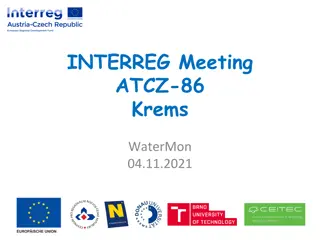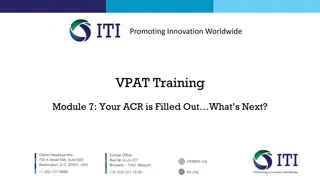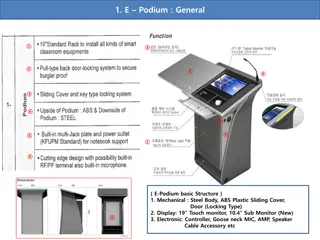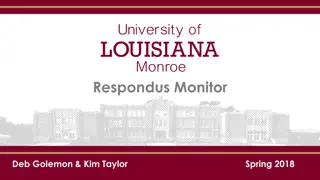Module 4: Monitor, Evaluate and Review
Child and adolescent health in humanitarian settings require a comprehensive approach that includes assessing, prioritizing, coordinating, responding, monitoring, evaluating, and reviewing activities. Developing a monitoring and evaluation plan is crucial in improving data quality, promoting collaboration, and highlighting success stories for effective humanitarian action.
Download Presentation

Please find below an Image/Link to download the presentation.
The content on the website is provided AS IS for your information and personal use only. It may not be sold, licensed, or shared on other websites without obtaining consent from the author.If you encounter any issues during the download, it is possible that the publisher has removed the file from their server.
You are allowed to download the files provided on this website for personal or commercial use, subject to the condition that they are used lawfully. All files are the property of their respective owners.
The content on the website is provided AS IS for your information and personal use only. It may not be sold, licensed, or shared on other websites without obtaining consent from the author.
E N D
Presentation Transcript
Module 4: Monitor, Evaluate and Review 1
Child and adolescent health in humanitarian settings: operational guide 2
The four interconnected programmatic action areas of the operational guide ASSESS & PRIORITISE How to obtain data on child/adolescent health (via needs assessment) and use it to prioritize actions COORDINATE How to take a coordinated approach to child and adolescent health in a humanitarian emergency RESPOND How to plan and enact a coordinated set of activities addressing the identified child and adolescent health priorities MONITOR, EVALUATE & REVIEW How to use data systems to review and improve child and adolescent health- related activities 3
Monitor, evaluate and review Monitoring, evaluation and review are essential to effective humanitarian action This section builds on the previous sections: Coordination (action area 1) Assessment and prioritization (action area 2) This module will specify how you monitor, evaluate and review the activities in the response (action area 3) 6
Develop a monitoring and evaluation plan Assign a lead agency within the RMNCAH/CAH working group or collaborate with the health cluster s M&E lead to create a comprehensive plan Integrate agency-level data when possible, these can aid internal M&E and quality improvement Using some of this detailed data for regional and national monitoring: Improves overall data completeness Encourages collaboration Highlights success stories 8
Monitoring and evaluation - Key indicators Key indicators provide a framework that identifies priorities, determines planning figures and coordinates across sectors This helps sectoral responses to reinforce each other and support the population s own capacity to meet their needs Key indicators outline the quality of assistance that should be attained, adjusted to the emergency context Example: access to education for children and adolescents in emergencies 9
Inter-Agency Network for Education in Emergencies (INEE) Foundational Standards for education in emergencies These foundational standards formulate the basis of indicators that could be used to monitor and evaluate education interventions in emergencies It can guide the integration of nurturing care for all children into humanitarian action 10
Monitoring and evaluation from the minimum standards of education (INEE) Ensure continuous monitoring of education response activities Monitor to ensure safety of everyone in education Involve vulnerable groups in monitoring activities Systemic collection of disaggregated data to inform responses Analysing and sharing education data with stakeholders Conducting systematic and impartial evaluations of education activities Involving all stakeholders, including community representatives Sharing evaluation findings and lessons learned to inform advocacy programs and policies, in a form understandable to all, including community members 11
Key actions Monitoring and evaluation plan Plan development: work with the health sector s agency lead to create a cohesive M&E plan for child and adolescent health, share joint assessments and consider academic partnerships Data review: evaluate current data collection methods across health services, encompassing health status and risks, health resources and service availability, and health system performance Key indicator selection: choose standardized key indicators to monitor implementation of priority CAH activities, considering population and age disaggregation Reporting structure agreement: agree on reporting units (e.g. mobile clinics, field hospitals) and reporting pathways, and frequency of submission, analysis, report generation and dissemination For more details please refer to the operational guide 12
Key indicators Monitoring and evaluation plan Creation of a CAH-focused monitoring and evaluation plan by the health cluster/sector, with clear indicators Early warning surveillance reports received from health facilities each week Regular production of an overall health information report by the lead health actor For more details please refer to the operational guide 13
Early warning systems Emergencies increase risk of spread of communicable diseases Early warning systems are essential to respond to emerging diseases and deteriorating conditions Crucial addition to regular surveillance systems Will track up to 10 priority conditions such as cholera, dengue, Ebola, malaria Data is collected from specific facilities to track spread and severity 15
WHO Electronic Early Warning, Alert, and Response System (EWARS) in emergencies EWARS in a box contains all equipment to establish surveillance and response activities Designed for difficult and remote field settings without reliable internet or electricity Includes 60 mobile phones, laptops and a local server to collect, report, and manage disease data Single kit can support surveillance for 50 fixed or mobile clinics, serving around 500,000 people Deployed during an emergency as an adjunct to the national disease surveillance system After the emergency, EWARS should re-integrate back into the national system 16
Child and adolescent health integration into EWARS A rapid assessment precedes the implementation of EWARS, to tailor recommendations to the emergency context This includes assessing affected populations, focusing on vulnerable groups such as children and adolescents It also includes identification of major risk factors, such as child malnutrition Indicators for CAH should be determined, e.g.: Proportion of unvaccinated cases among measles cases in children <5 Integration of Early Childhood Development (ECD) activities into existing ECD programs and activities EWARS employs standardized definitions and alert thresholds, adaptable to emergency settings, e.g. for suspected poliomyelitis/AFP: any child <15 years with AFP OR any paralytic illness in a person of any age if poliomyelitis is suspected EWARS also includes system-generated alerts for increasing trends 17
Health Resources and Services Availability Monitoring System (HeRAMS) Aims to ensure that core information on essential health resources and services is readily available to decision makers at country, regional, and global levels Involves support of countries on the standardizing and continuously collecting, analyzing, and disseminating information on essential health services and resources Rapidly deployable and scalable for emergency response and fragile countries; can integrate into routine health information systems HeRAMS has information on CAH, such as: Information, education, and communications (IEC) for child caretaker, promotion of exclusive breastfeeding and referral of sick children 18
Multi-cluster / sector Initial Rapid Needs Assessment (MIRA) MIRA is a joint needs assessment tool for sudden onset emergencies Besides using MIRA for needs assessment, it can also be used for M&E activities and analysis It facilitates inter-agency collaboration to establish a common understanding of the situation and its likely evolution Humanitarian actors utilize MIRA s findings to develop a plan, mobilize resources, and monitor the situation MIRA directs the development of subsequent needs assessments and analysis (often more detailed and operational) MIRA provides an evidence base for response planning 19
Impact of emergencies on health information systems Routine health information systems and data flow are usually disrupted during emergencies Adaptation is necessary to reflect the needs and capacities during the emergency Emphasize the importance of data sharing and promoting its use at local, district, and national levels Encourage health managers to consult the lead monitoring and evaluation agency for support if they lack the time or analytical skill to review data effectively Highlight the critical role of collecting data to inform action and decision-making during emergencies 20
Programme reviews for maternal, newborn, child and adolescent health (MNCAH) A programme review for MNCAH is: These principles constitute the fundamental aspects of program review, adaptable for utilization in humanitarian settings with adjustments A process for assessing mid- and/or end-term country progress in improving MNCAH Conducted on periodic basis as part of regular programme planning and implementation cycle Most useful if coordinated with other ongoing review and planning activities Ideally incorporated into existing strategic and annual plans and processes Using a continuum of care approach, covering all life stages (pre-pregnancy, pregnancy, childbirth, newborn, childhood, adolescence, post-reproductive), and all levels of the health system (household, community, health facilities, referral facilities) Aim: to assess how well national and subnational MNCAH programme(s) implemented their plans and identify successes, lessons learned and good practices 21
MNCAH programme review - activity flow To be adjusted to emergency contexts as appropriate 22
WHO materials to support an MNCAH Programme Review Programme review for maternal, newborn, child and adolescent health: guide for conducting national and subnational programme reviews Programme review for maternal, newborn, child and adolescent health: guide for conducting national and subnational programme reviews: facilitator's guide Maternal, newborn, child and adolescent health programme review data tool 23
Key actions Improve health information systems Collaboration and information sharing - RMNCAH/CAH working group cooperates with the health cluster lead to improve health information services for CAH Indicator alignment and system adaptation - Agree on indicators used and adapt or develop suitable health information system for the emergency context Early warning system - Establish or modify early warning systems to detect and respond to communicable disease outbreaks Data utilization and protection - Analyze and disseminate health surveillance information timely, utilize supplementary data for decision-making, and ensure data protection measures For more details please refer to the operational guide 24
Key indicators Improve health information systems RMNCAH/CAH working group provides leadership to the health cluster to improve the health information system (including early warning systems), and regularly disseminates reports to partners Early warning surveillance reports received from health facilities each week Conduct regular health information reports addressing CAH priorities, including analysis and interpretation of epidemiological data disaggregated by age, coverage and use of health services. Make sure this does not only cover surviving, but also thriving (as nurturing care) For more details please refer to the operational guide 25
Resources Monitoring and evaluation IASC Operational Guidance for Coordinated Assessments in Humanitarian Crises (2012) Health Cluster Guide: Practical Implementation at Country Level (2009) Guideline: Common Operating Datasets in Disaster Preparedness and Response (2010) 26
Tools Monitoring and evaluation 1. Global Health Cluster tools Health Cluster 2. EWARS: a simple, robust system to detect disease outbreaks World Health Organization (WHO) Emergencies 3. Health information system (HIS) toolkit UNHCR, the UN Refugee Agency (2010) 4. Health information system (HIS) toolkit reference manual UNHCR, the UN Refugee Agency (2010) 5. Multi-sector initial rapid assessment (MIRA) Inter-Agency Standing Committee (2015) 6. Rapid risk assessment of acute public health events World Health Organization (WHO) (2012) 7. Multi indicator cluster surveys (MICS) UNICEF 8. Health Resources Availability Monitoring System (HeRAMS) World Health Organization (WHO) Humanitarian Health Action 9. Strategic Tool for Assessing Risk A comprehensive toolkit for public health risk assessment (in press) 10.3W/4W/5W who, what, where, when, for whom United Nations Office for the Coordination of Humanitarian Affairs 11.Service Availability and Readiness Assessment (SARA) World Health Organization (WHO) (2015) 12.Child protection rapid assessment toolkit Global Protection Cluster, Child Protection Working Group (2012) 13.dhis2 District Health Information Software, version 2 is free health information system software 14.Newborn health in humanitarian settings: field guide United Nations Children s Fund (UNICEF) and Save the Children (2018) - (See annexes of the field guide for newborn assessment tools) 27
Thank you For more information, please contact: Khalid Siddeeg, Regional Advisor EMRO, siddeegk@who.int Kim Beentjes, Technical Officer EMRO, beentjesk@who.int
